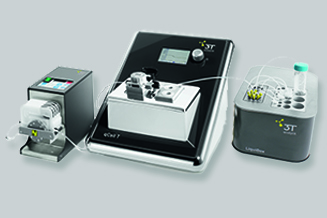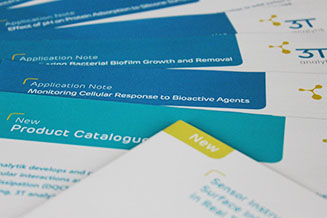Biofilm Analysis with qCell T Series
Real time insights into biofilm growth and physical state
Bacteria adhere on virtually all natural and man-made surfaces on which they grow into larger communities called biofilms. Biofilms are generally considered a problem. When formed on biomedical implants, biofilms can lead to potentially life-threatening infections, thereby having severe impact on human health. They are also a source from which potentially harmful microbes can be released, leading to contamination elsewhere; pathogenic bacteria are easily transmitted from one person to another via surfaces. Furthermore, biofilms can affect heat transfer across surfaces, impose frictional resistance and induce surface corrosion, thereby having a negative impact on performance, production and lifespan of equipment in industrial settings. The fact that already established biofilms are tremendously resilient towards removal and antibiotics treatment calls for development of novel antifouling strategies and this implicates intensive research.
Featured Products for Biofilm Analysis
3T analytik’s advanced sensor technologies -qCell T- detects bacterial adhesion and follows biofilm growth on surfaces by recording minute changes in the resonance behavior of a quartz sensor. The quartz sensor can be coated with a wide range of materials and coatings. Implement it in your research to characterize biofilm formation:
- study initial attachment of microorganisms to surfaces
- follow biofilm growth in real-time
- gain unique information about bacteria and biofilm physical structure and coupling with surfaces
- capture dynamic behavior during biofilm development
*The colorized version of PHIL 232 depicts a scanning electron microscopic (SEM) image of a number of Pseudomonas aeruginosa bacteria. Author: CDC/ Janice Haney Carr



